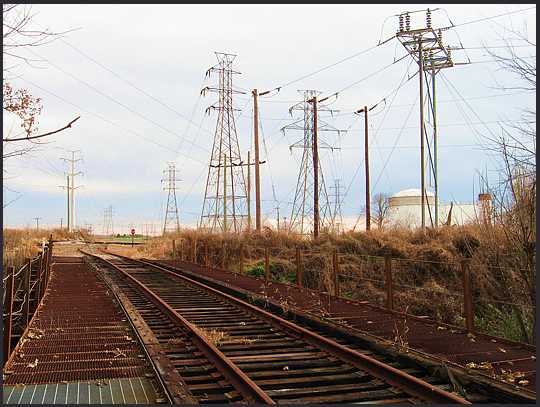

click 'er for bigger
While working on the set up that became yesterday's entry, an odor of decay was occasionally quite prevalent in the air. Without intentionally looking for its source, I eventually found it nonetheless. These remains of some canine were under the bridge right above me. I took four quick exposures but didn't study what was before me in any detail. So none of them were the least bit artfully composed - they are indeed snap shots, more so than even most of the entry photos left here.
But while working on this photograph (Full disclosure: only contrast has been adjusted through the use of masks; nothing was moved or added; no colors were altered.) it was inevitable that I begin to think about what it captured. The physical evidence is highly suggestive. The sturdy green collar and the size of the jaw bone show the animal to have been quite large, probably in the 80 -100 lb. range. The position of the head and upper spine in relation to the rear leg show a powerful disconnect. All of which leads me to believe the animal that consumed the dog was incredibly powerful. In these parts, bear is about all that are left that are wild and have this kind of power. Humans don't leave these kinds of evidence behind. Not a pretty image to imagine.
Which leaves me wondering whether I should even be posting this picture. Exactly how upsetting is this image? What would have been more unsettling to me personally would have been the sight of recent carnage. Blood and gore tip over the edge into disgusting, whereas this image may have - and certainly implies - gore but is removed from the incident long enough that there are no traces of blood. It's not exactly antiseptic, and the stench of death is still occasionally present, but whatever suffering took place is long past.
While this is "only" the remains of a dog, why is this less unsettling than if it were human? Simply put: we place more value on human life than any other life form on this planet. This seems to be skewed, but understandable: to each his own. As our connection to "the wild" decreases, our sense of loss seems to increase when unexplained incidents such as this occur.
Coming back to the photograph itself, it is one of those simple documents of what was there. In a scientific sense, it both piques and satisfies my curiosity about events at which I was not present. But what are my motives for showing it here? Merely to titillate with a display of drama and death? I have the same thoughts about much of contemporary photographic reportage. I don't need to see it to be reminded of the cruelty of humans. I see enough of it in daily life in the manner in which we treat other species and the environment in which we live.
Our motives for photographs never seem to be clear or totally unambiguous.
 Sunday, December 21, 2008 at 02:37PM
Sunday, December 21, 2008 at 02:37PM 









































